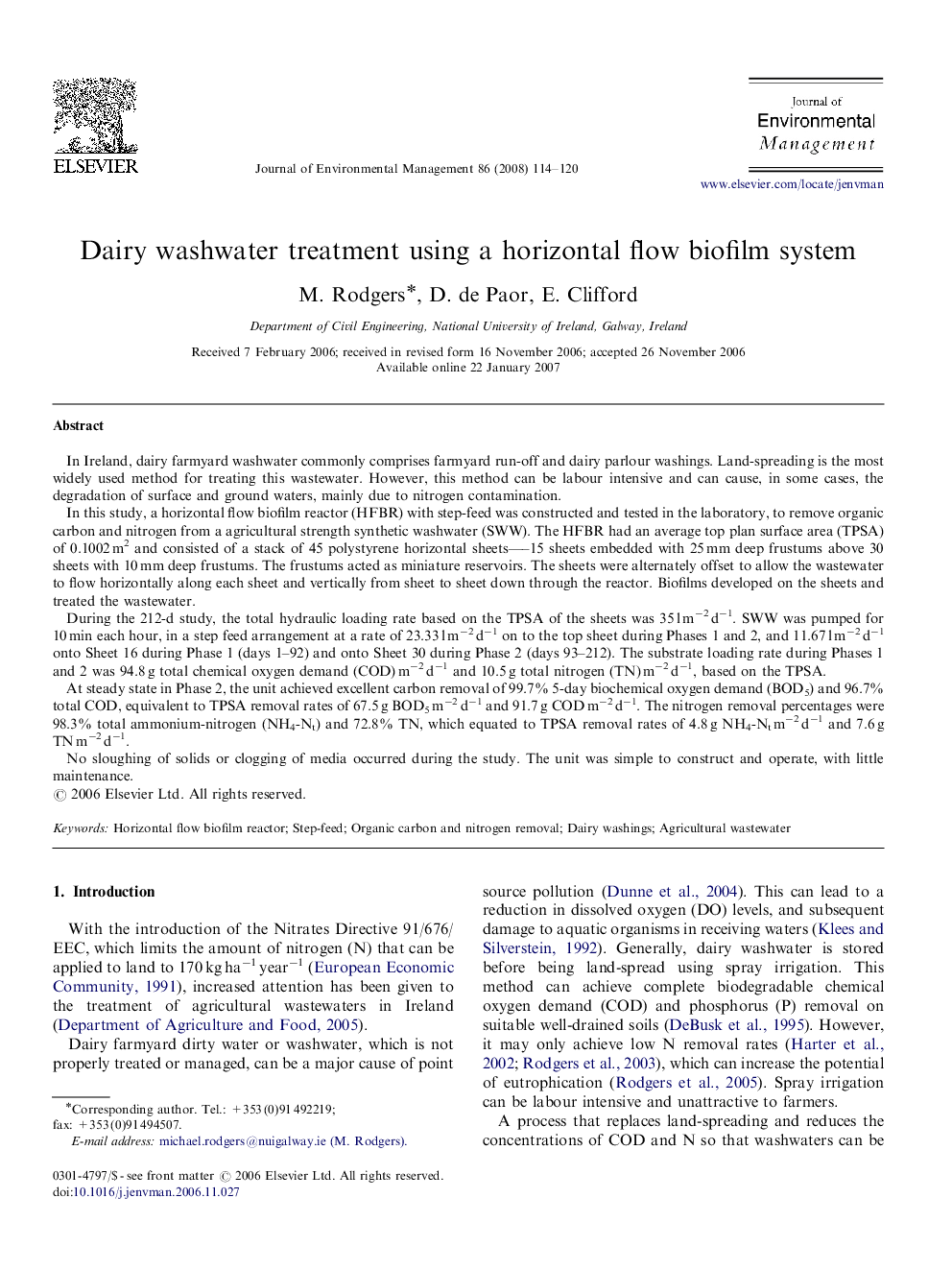| کد مقاله | کد نشریه | سال انتشار | مقاله انگلیسی | نسخه تمام متن |
|---|---|---|---|---|
| 1058367 | 947116 | 2008 | 7 صفحه PDF | دانلود رایگان |

In Ireland, dairy farmyard washwater commonly comprises farmyard run-off and dairy parlour washings. Land-spreading is the most widely used method for treating this wastewater. However, this method can be labour intensive and can cause, in some cases, the degradation of surface and ground waters, mainly due to nitrogen contamination.In this study, a horizontal flow biofilm reactor (HFBR) with step-feed was constructed and tested in the laboratory, to remove organic carbon and nitrogen from a agricultural strength synthetic washwater (SWW). The HFBR had an average top plan surface area (TPSA) of 0.1002 m2 and consisted of a stack of 45 polystyrene horizontal sheets—–15 sheets embedded with 25 mm deep frustums above 30 sheets with 10 mm deep frustums. The frustums acted as miniature reservoirs. The sheets were alternately offset to allow the wastewater to flow horizontally along each sheet and vertically from sheet to sheet down through the reactor. Biofilms developed on the sheets and treated the wastewater.During the 212-d study, the total hydraulic loading rate based on the TPSA of the sheets was 35 l m−2 d−1. SWW was pumped for 10 min each hour, in a step feed arrangement at a rate of 23.33 l m−2 d−1 on to the top sheet during Phases 1 and 2, and 11.67 l m−2 d−1 onto Sheet 16 during Phase 1 (days 1–92) and onto Sheet 30 during Phase 2 (days 93–212). The substrate loading rate during Phases 1 and 2 was 94.8 g total chemical oxygen demand (COD) m−2 d−1 and 10.5 g total nitrogen (TN) m−2 d−1, based on the TPSA.At steady state in Phase 2, the unit achieved excellent carbon removal of 99.7% 5-day biochemical oxygen demand (BOD5) and 96.7% total COD, equivalent to TPSA removal rates of 67.5 g BOD5 m−2 d−1 and 91.7 g COD m−2 d−1. The nitrogen removal percentages were 98.3% total ammonium-nitrogen (NH4-Nt) and 72.8% TN, which equated to TPSA removal rates of 4.8 g NH4-Nt m−2 d−1 and 7.6 g TN m−2 d−1.No sloughing of solids or clogging of media occurred during the study. The unit was simple to construct and operate, with little maintenance.
Journal: Journal of Environmental Management - Volume 86, Issue 1, January 2008, Pages 114–120